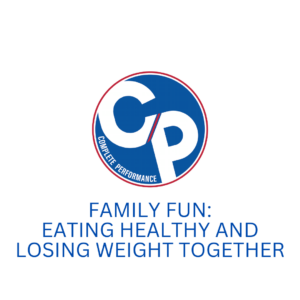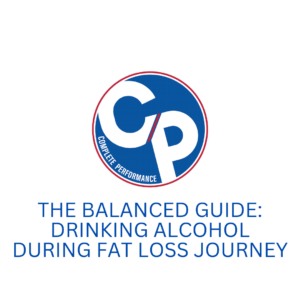Did you know that in 2018 the Center for Disease Control (CDC) found that 49.3% of Americans over the age of 20 have or are currently trying to lose weight?
Can you imagine what that percentage looks like after this 2020 COVID shutdown?
Are you a part of that statistic?
I know I’m guilty…
I also know I’m glad they didn’t ask how many ATTEMPTS I’ve made to lose weight (YIKES!).
The really sad part is that I’m willing to bet that most of these people surveyed don’t have the slightest clue where to begin with fat loss.
How could you – you see one company promoting 1 method for fat loss on Facebook only to see a coach suggesting the complete opposite on Instagram?
Or you hear 1 friend who had incredible success following this meal plan and a family member who did something totally different.
The truth is that every single one of us is different, which means every single one of us should be following a different nutrition plan!
If you read in Nutritional Periodization Pt. 1 you found the Primer Phase to be all about better understanding how to prepare and create a nutrition plan suitable for YOU to prepare your body to sustainably lose body fat.
If you haven’t checked that out yet and you’re serious about losing body fat, please go take a look BEFORE you jump right into Pt. 2.
Why?
Because Pt. 2 is all about the Fat Loss Phase.
Hands down, this is the most exciting phase of nutritional periodization.
It’s where everyone wants to be because it yields the quickest changes, and if set up and mapped out correctly, it yields the most instant gratification.
This is the time you’re actually losing body fat and working towards achieving your goal.
Before you dive into the Fat Loss Phase, it’s important we address some of the key components to give you the best chance for success.
Rate of Loss
Whenever someone enters a fat loss phase their goal is often to lose weight as fast as possible, but what is the appropriate rate to lose body fat?
It depends.
How quickly you should lose fat is VERY individual, and from that we increase or decrease calories and macros based on your rate of loss.
Now, if you’re concerned with fat loss and you’re at a point in life where this can be your primary focus, you can push for 0.75 to 1.5% of body weight per week. This does mean you must be in a position to give up social drinking/eating, dining out, and junk foods. It should be noted that this strategy works well for those who find the idea of a long diet daunting or intimidating.
What if you’re not looking to push things THAT much? What if you want to live a little during your diet?
No problem! There is a step down in which you’re still willing to put a large focus on fat loss, but just at a slower pace. In this strategy you’d be aiming for a rate of loss of 0.5 to 1.5 % of body weight per week. This is where many “advanced” dieters fall, as well as many young adults and parents.
Unfortunately, most of us are either not just looking for fat loss or we’re not at a point to give up our lives to lose body fat.
Many are aiming for a body recomposition, which means you’re building muscle and losing body fat at the same time. If this is your goal, your rate of loss will be slower at a rate of 0.25 to 0.5% of bodyweight per week.
Then there are those individuals looking for more of a flexible lifestyle, wherein you’d like to keep up some of your social engagements and meals out. In these situations, the idea of drastically reducing food intake is not wise, so I recommend you aim for a slower rate of loss at around 0.5 to 1.0% of bodyweight per week.
Calorie & Macro Splits
Once you’ve determined your rate of loss, your calorie and macros must be set up in a way that supports fat loss.
It takes strategy.
It takes planning.
It takes being realistic related to your lifestyle.
If you go into this thinking you can just drop some calories and see results, this is going to be a very difficult journey.
In nutritional periodization, I like to use a strategy called calorie cycling to ensure you’re in the best place in regard to your metabolism, hormones, and overall health.
5/2 Split
Without a doubt, this is my most popular calorie/macro split with clients.
In this phase, you’re in a deficit for 5 days and eating at maintenance for 2 days.
This works great for the following clients:
- Those who enjoy their weekends.
- Those who need a more flexible lifestyle.
- Those who have 2 max or heavy lifting days per week.
It is important to note that the additional calories on your maintenance days should not just be a free for all…
Calories are brought back up to maintenance by increasing carbohydrate intake to boost muscle glycogen and provide the muscles with fuel.
6/1 Split
The 6/1 Split differs from the 5/2 Split in that you’re brought back up to maintenance calories for 1 day instead of 2.
The 6/1 Split works great for individuals searching for a shorter fat loss phase, wherein the goal is to lose fat as fast as possible while maintaining lean muscle mass.
Now, most feel tempted to use this on a weekend to allow for a free-for-all type of binge; however, because you’ll be returning to maintenance by elevating carbs, it’s important you put this on the day of or the day before you’re HARDEST training day of the week.
It is important to recognize that the added day creates a larger deficit, and while it does shorten the diet, it requires more discipline through less flexibility.
11/3 Split
Both the 5/2 and 6/1 splits are designed to cover a 1-week time span, but that’s not the only way.
Enter the 11/3 Split.
In this split, you’re in a calorie deficit for 11 days to give you enough time in a deficit to create a solid amount of fat loss.
After you complete the 11 deficit days, you follow it up with 3 days at maintenance level calories. This increase again comes from carbs in an attempt to replenish your muscle glycogen stores, boost performance, and maintain lean muscle mass.
This approach works GREAT for individuals in a longer fat loss phase. It gives you the chance to achieve your desired fat loss outcomes without being TOO aggressive. The 11/3 split gives you more calories for flexibility every other weekend.
Unfortunately, this isn’t a great strategy for individuals in a shorter fat loss phase. While the longer stretch in a deficit is great, there are more days at maintenance calories.
4/3 High-Low Split
Up to this point, deficit days have been increasing, but now I’m introducing you to one of my favorite strategies.
It’s the 4/3 Split.
In this strategy, we utilize 4 days in a larger deficit and 3 days in a slight deficit.
Unlike the previous three strategies, this 4/3 split does not have you returning to maintenance calories but only a slightly elevated number to help restore muscle glycogen.
This strategy works great for individuals training 3 to 4 days per week. Depending on the individual, we may put all 4 larger deficit days in a row or we may alternate between high and low days based on one’s training schedule.
Biofeedback Assessment & Adjustment
Regardless of the approach you select, it’s important to closely monitor your biofeedback. As a coach, I use biofeedback to assess your physical and mental progress. In addition, biofeedback is the indicator we use to determine how soon we transition you into the next phase of nutritional periodization.
Here are the biofeedback metrics I ask clients to monitor:
Training Performance
This looks at both the quantity and quality of your workouts.
During a fat loss phase, YOUR primary goal is to lose body fat, while my primary goal as your coach is to maintain your training performance enough to support your fat loss.
If training performance dips to the point where training stalls or you’re regressing, it’s time for a diet break or adjustment in your nutritional periodization plan.
Sleep Quality & Quantity
Sleep is a MAJOR contributor to fat loss.
Without enough quality sleep, your fat loss results are destined to suffer, so it’s something we’d like to closely monitor.
It’s important to look at both quantity and quality.
If you’re getting adequate sleep both in quantity and quality, but still feeling tired and sluggish, that’s another indicator that fat loss is being pushed too aggressively and it might be time to back things down.
Hunger Levels
Hunger levels are something that need to be closely monitored during fat loss. Some hunger is normal for dieting, and a great indicator that you’re eating fewer calories than you’re burning.
But too much hunger is never good for adherence.
Like all measures of biofeedback, I have clients rate on a scale of 1 to 5, where 5 is the absolutely starving. As a coach, I look for client hunger to stay between a 2 and 3. Anything beyond that, considering adherence to this point has been normal, and it might be time to adjust where you’re at in nutritional periodization.
Craving Levels
Next to hunger, craving levels also need to be closely monitored during fat loss. Similar to hunger, some cravings are normal, but too many cravings and you’re risking sabotage of your nutritional plan.
When cravings are consistently high, there’s only so long one can resist before giving into temptation and hurting your fat loss results.
Recovery & Soreness
Fat loss is hard enough on the body, but if you feel like trash because you’re sore and under recovered, it makes the journey MUCH worse.
Now, context is key.
If you just started a whole new training program or you really increased the intensity, you’re going to be sore.
However, if you’ve been doing the same old workouts and you’re too sore or physically exhausted to go about your day, then we have a problem.
Motivation Levels
When you start a fat loss phase, motivation is pretty high because you’re excited to FINALLY achieve your fat loss goals.
Unfortunately, that doesn’t last…
Life changes.
Stress at work.
Real life temptations.
You name it, it WANES on your motivation levels big time.
If client motivation levels trend at the low end of the scale (1 to 2), I know that diet fatigue is beginning to set in and it might be time to refocus goals or take a diet break to return motivation levels to normal.
Mood
Your mood will fluctuate quite a bit during a fat loss phase.
Consider this your warning.
But if your mood is consistently rated as poor, it’s clear that the psychological toll of being in a fat loss phase is being taken on your body.
This means it’s time to transition out to restore your mood and hormones before returning to a fat loss phase.
Length of a Fat Loss Phase
The final piece to consider is the length of a fat loss phase.
When you begin a fat loss phase, you’re going to do everything you can to stay in it…
It makes sense because all you can imagine is your end goal. You see yourself there and you want it, BAD.
But depending on how far you are from your end goal, pushing all the way to it isn’t wise…
A typical fat loss phase lasts 6 to 12 weeks.
After this, it’s important to shift to another phase of nutritional periodization so you can spend some time rejuvenating and recuperating your body and mind.
About The Author

Jordan Davies is the Co-Owner of Complete Performance. Jordan has her B.S. in Exercise Science and Psychology, and her M.A. in Holistic Health Studies. She is a CSCS certified strength and conditioning coach, and a PN-1 and NCI-1 certified nutrition coach. She loves to study how the human body needs to be moved and nourished and making that fit to your unique lifestyle. ,Click Here Now to Apply for Coaching with Jordan.




